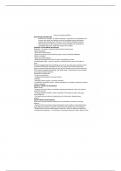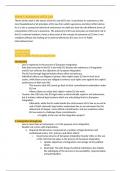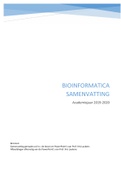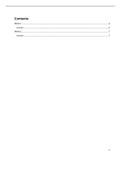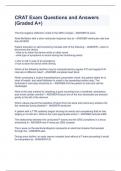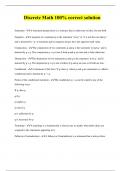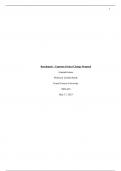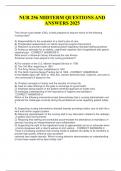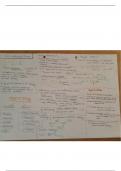MOTIVATION AND EMOTION
- Emotions can change in an instant, especially in response to an unexpected event.
Surprise, fear, anger, and sadness are some immediate emotions that people
experienced in the aftermath of the April 15, 2013 Boston Marathon bombing.
- What are emotions? What causes them? What motivated some bystanders to
immediately help others, while other people ran for safety?
INTRINSIC VS EXTRINSIC MOTIVATION
Motivation – the wants or needs that direct behavior toward a goal
Intrinsic motivation:
• Arises from internal factors.
• Behaviors are performed because they bring a sense of personal satisfaction.
Extrinsic motivation:
• Arises from external factors.
• Behaviors are performed in order to receive something from others.
Overjustification effect – intrinsic motivation is diminished when extrinsic motivation is
given.
Research suggests that when something we love to do, like icing cakes, becomes our job,
our intrinsic and extrinsic motivations to do it may change. Once we are receiving an
extrinsic motivation (like being paid) we may lose the motivation to do it just for enjoyment.
Other research suggests the opposite, that certain types of reinforcement, such as praise,
can increase intrinsic motivation).
Explanations of differences:
1. Type of reinforcement.
• Tangible rewards appear to decrease intrinsic
motivation.
• Intangible rewards appear to increase motivation.
2. Expectation of extrinsic reward – intrinsic motivation is more likely to decrease if extrinsic
reward is expected.
INSTINCT THEORY OF MOTIVATION
William James
• Proposed the instinct theory of motivation, asserting that behavior is driven by instincts
(which aid survival).
• Proposed instincts included a mother’s protection of her baby, the urge to lick sugar,
and hunting prey.
• The theory received criticism for ignoring the role of learning in shaping human
behavior.
DRIVE THEORY OF MOTIVATION
Drive theory proposed that the maintenance of homeostasis is important in directing
behavior.
• Deviations from homeostasis create physiological needs resulting in psychological drive
states that direct behavior to meet the need and bring the system back to homeostasis.
• Emphasizes the role that habits (pattern of behavior in which we regularly engage) play
in behavioral responses → If a behavior successfully reduces a drive, we are more
, likely to engage in that behavior in future.
AROUSAL THEORY OF MOTIVATION
The concept of optimal arousal in relation to performance on a task is depicted here.
Performance is
maximized at the optimal level of arousal, and it tapers off during under- and overarousal.
Arousal theories assert that there is an optimal level of arousal that we all try to maintain.
Underaroused →Become bored, seek stimulation.
Overaroused → Engage in behaviors to reduce arousal.
Research suggests that the optimal arousal level for performance is moderate arousal.
AROUSAL THEORY OF MOTIVATION
Yerkes and Dodson (1908)
The optimal arousal level depends on the complexity and difficulty of the task to be
performed.
Yerkes-Dodson Law – task performance is best when arousal levels are in a middle
range, with difficult tasks best performed under lower levels of arousal and simple tasks
best performed under higher levels of arousal.
SELF-EFFICACY & SOCIAL MOTIVATION
Self-efficacy – an individual’s belief in her own capability to complete a task.
Bandura: Theorized that self-efficacy plays a role in motivating behavior.
• Argues that motivation derives from expectations held about the consequences of
behaviors.
• Beliefs about our abilities will determine what we do and goals we set for ourselves.
Social Motives
Need for achievement – drives accomplishment and performance.
Need for affiliation – encourages positive interactions with others.
Need for intimacy – causes us to seek deep, meaningful relationships.
MASLOW’S HIERARCHY OF NEEDS
Abraham Maslow (1943)
Proposed a theory of motivation that spans the spectrum of motives including biological,
individual and social.
• One must satisfy lower-level needs before addressing the needs in higher levels.
• A person without food, water and shelter is unlikely to be focused on relationships or what
people think of them.
Hunger and Eating
PHYSIOLOGICAL MECHANISMS
Hunger and eating are regulated by a complex interplay of hunger and satiety signals that are
integrated in the brain.
Before Eating
1. Empty stomach → stomach contracts → hunger pangs and secretion of chemical
messages that travel to the brain as a signal to initiation feeding behavior.
2. Low blood glucose levels → pancreas and liver generate chemical signals that
induce hunger to initiate feeding behavior.
After Eating
Satiation – feeling of fullness and satisfaction causing eating behavior to stop.

